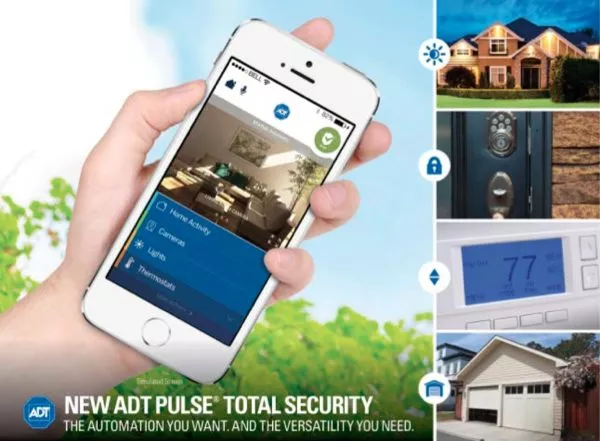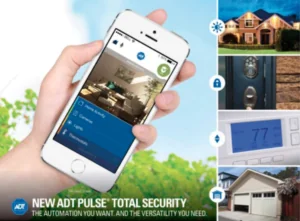
08 Oct Smart Home Technology is Taking Off

Everyone remembers their joy back in the day when perhaps the first smart technology was the remote control. We felt that joy again when the coffee maker had a pot of coffee ready for us upon awakening. Then we became accustomed to security alarms, sleep-number beds, programmable thermostats, remotes that started our cars and timers for the window treatments and lights in our absence. Little by little, we’ve become aware that technology can help us save money, time and, in some cases, lives. Smart home technology, getting more popular in homes, is allowing people to live like they’re a guest star on Star Trek! Smart home technology touches many more industries than just smart phones and coffee pots, though.
In the Beginning
The smart home began back in the early 1900s with the introduction of sewing machines and vacuum cleaners. It segued into the 60s when the first computer was developed, into the 70s with the development (although it failed due to a technicality) of “things” communicating between them. Of course, home automation really took off in the 80s, 90s and on up until today with the rapid development and introduction of faster bandwidth, wifi, fully automated systems of all types, communications and control using tools like smart phones, tablets and computers.
Smart Numbers
It just makes sense that technology testing and analyzing website CNET should make a study of smart home technology. The tech news entity noted that people are grabbing smart home technology items because it involves both their finances as well as their emotions. Forty-five percent of those surveyed said they saved over $1K a year with their smart home technology. Parents of children under age 18 feel more secure with their smart home technology. Most all those surveyed said that ease of use was important to them. This study further states what a Harvard study stated two years ago: smart home technology is not only being built into new construction homes, but remodels are using more and more smart home technology. Some experts say that by 2017, over ten billion homes will be smart, up from two billion in 2012.
How Smart is Smart?
Dreamers have been dreaming up incredible things since time began. The early 1900s really began the cycle of dream morphing into reality. Microwaves were predicted in the 30s, home automation in the 60s and emerging technology to be included in home builds in the 80s. Home automation shown in movies and TV shows were developed and tested in labs. Now, home automation includes retina or thumbprint recognition upon entry, sensors to tell homeowners who is in the house, why and for how long and technology to tell parents when baby is slipping out of the crib and where she goes. Appliances talk to each other, and we can direct the conversation on our smart phones. The oven can even begin cooking supper via text message. Mega-companies are buying each other up, partnering and otherwise combining forces to bring us the newest and most amazing of technologies. Affordably, even.
Advantages of Home Automation
Security and emotional contentment can be had for very few dollars. That is perhaps the real reason smart home technology has caught on like a house afire recently. When homeowners get serious discounts for every home automation gadget installed, the financial advantage is obvious. Power companies may scream when their revenues dip due to home automation, but they are the first to come test your home for air leaks. Some even provide smart meters. Homeowners whose houses sense changes in its family’s habits and adjust for this have an edge over any power company, thus saving lots of money. Homeowners and landlords as well benefit from recognition technology. This keeps home intruders and other unwanted persons out of the house, thus preventing all sorts of insurance claims. In the case of a landlord, this can prevent lawsuits. Both landlords and homeowners recognize what to love in a house that locks the doors when the homeowner or renter is rushed and forgets. In cases like this, the security alarm senses absences and turns itself on, the windows and doors close themselves and the a/c or heat adjusts itself.
Where ADT Enters the Picture
Integration of the Internet of Things, or the items that can be connected to wifi and with which can be communicated, makes home automation possible. 2015 was the year in which ADT partnered with mega companies like LG and Google’s new acquisition Nest to bring homeowners and landlords an “all-in-one” security product called ADT Pulse as well as integrating Nest’s Learning Thermostat into ADT Pulse. The partnership between LG and ADT promises users a more integrated experience with the Internet of Things. Perhaps a more important partnership, at least for families with members whose health requires monitoring, is between Life360 and ADT. ADT already offers ADT Chaperone, a health monitoring system for family members on the go. Partnering with Life360 offers a wider horizon in addition to integrated systems. The app can even be used to monitor children on their way home from school in order to make sure they arrived safely. Another partnership between ADT and Tyco Security Products will enable homeowners in the UK and Africa to integrate the ADT connection with the Tyco security product.
We can tell you all about ADT Pulse products, partnerships and possibilities in the home automation industry and the Internet of Things when you contact us for more information.


No Comments